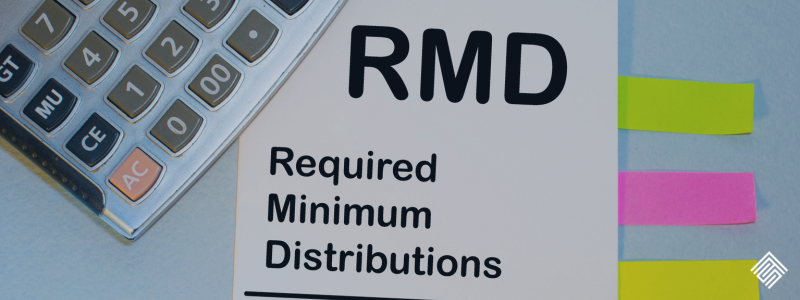5 RMD Myths Every Retiree Must Know to Avoid Costly Mistakes!

Retirement is an exciting phase of life, but managing your finances can be tricky. One key aspect you’ll need to master is Required Minimum Distributions (RMDs). Let’s bust some common myths and get you on the right path for a secure and enjoyable retirement.
Common Myths About RMDs
Myth 1: RMDs Apply to All Retirement Accounts You might think all retirement accounts are treated the same, but Roth IRAs don’t follow these rules. They’re not subject to RMDs during your lifetime, which can be a significant advantage.
Myth 2: You Can Delay RMDs Indefinitely It’s tempting to think you can just leave your money to grow forever, but the IRS has other plans. You have to start taking RMDs at age 72, or you’ll face hefty penalties.
Myth 3: RMD Amounts Are Set in Stone RMDs aren’t a fixed amount each year. They change based on your account balance and a life expectancy factor. So, each year brings a new calculation.
Myth 4: RMDs Are Only Taxed When Withdrawn Sure, RMDs are taxable when you take them out, but don’t forget they can bump you into a higher tax bracket, affecting your overall tax situation.
Myth 5: Beneficiaries Can Ignore RMDs If you inherit a retirement account, RMDs don’t just disappear. Beneficiaries have specific rules to follow to avoid penalties and make the most of their inheritance.
So, What Exactly Are RMDs?
RMDs are the minimum amounts you must withdraw annually from certain retirement accounts once you hit age 72. The IRS set these rules to ensure the government eventually collects taxes on your retirement savings. Accounts affected include:
- Traditional IRAs
- SEP IRAs
- SIMPLE IRAs
- 401(k) plans
- 403(b) plans
- 457(b) plans
When Do RMDs Start?
Thanks to the SECURE Act of 2020, you start taking RMDs at age 72. If you turned 70½ before 2020, your RMDs started at 70½. Your first RMD must be taken by April 1 of the year after you turn 72, with subsequent RMDs due by December 31 each year.
How Are RMDs Calculated?
RMDs are based on your account balance as of December 31 of the previous year and a life expectancy factor from IRS tables. The basic formula is:
RMD=Account BalanceLife Expectancy Factor\text{RMD} = \frac{\text{Account Balance}}{\text{Life Expectancy Factor}}RMD=Life Expectancy FactorAccount Balance
Why Do RMDs Matter?
- Taxes: RMDs count as taxable income. Miss taking one? You could be slapped with a 50% penalty on the amount not withdrawn.
- Cash Flow: RMDs help you plan your cash flow, ensuring you have the funds you need for living expenses.
- Investments: Knowing your RMD schedule can help tailor your investment strategy, keeping enough liquid assets available to cover withdrawals.
Strategies for Handling RMDs
- Combine Accounts: Merge multiple retirement accounts to simplify your RMD calculations.
- Plan Ahead: Make RMDs a part of your broader retirement income strategy to avoid surprises.
- Roth Conversions: Consider converting traditional accounts to Roth IRAs to reduce RMDs and enjoy tax advantages.
- Automate Withdrawals: Set up automatic distributions to meet RMD requirements without the hassle of manual calculations.
How to Take Your RMD
- Do the Math: Use the IRS formula and life expectancy tables.
- Call Your Custodian: Ensure your financial institution processes the distribution correctly.
- Tax Withholding: Decide if you want taxes taken out of your RMD.
- Record Keeping: Keep detailed records of your RMD calculations and distributions for tax purposes.
Avoiding Common Pitfalls
- Mark the Deadline: Missing the RMD deadline can cost you big time. Set reminders!
- Double-Check Calculations: Ensure your calculations are correct or get help from a financial advisor.
- Inherited IRAs: Understand the specific RMD rules for inherited IRAs to avoid penalties.
To Sum It Up
Getting a handle on your RMDs is key to a smooth and stress-free retirement. Stay proactive and informed to minimize taxes, manage cash flow, and enjoy the retirement you’ve worked hard for. And remember, if things get complicated, a financial advisor can be your best ally.
Retirement should be a time to relax and enjoy life. With a good grasp of RMDs, you can approach this new chapter with confidence and peace of mind.
Ready to take control of your RMDs and secure your financial future? Contact us today for personalized advice and start your journey toward a worry-free retirement!
Ready to Take The Next Step?
For more information about any of the products and services listed here, schedule a meeting today or register to attend a seminar.
